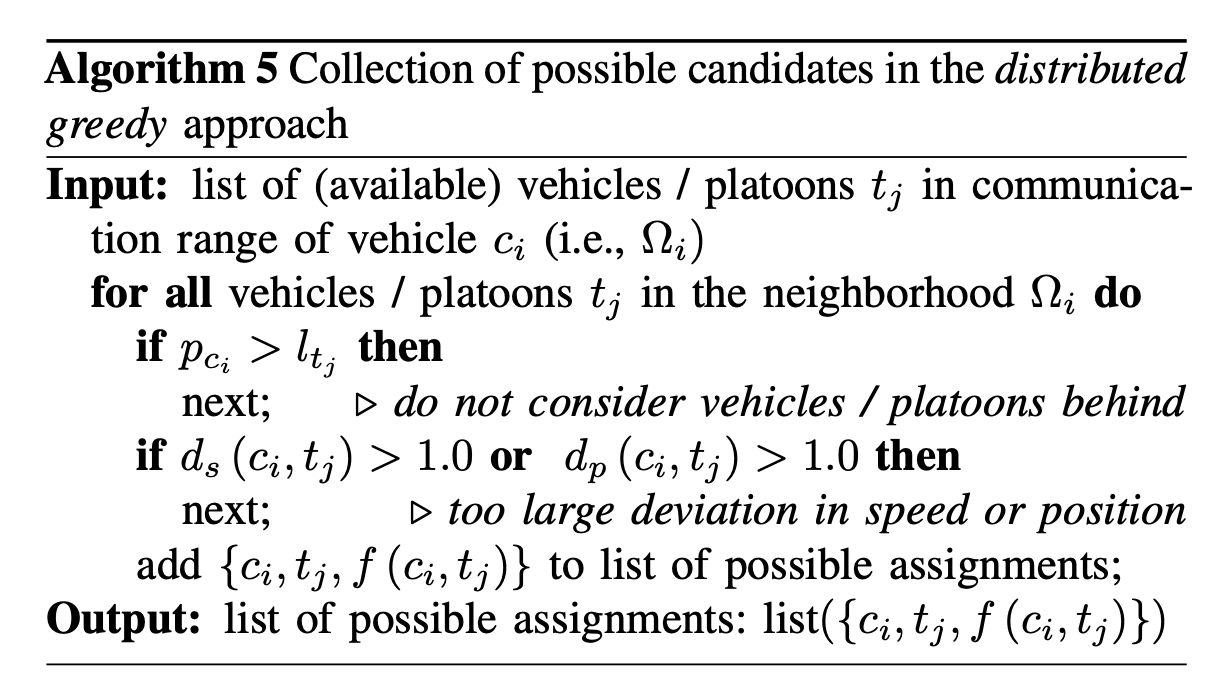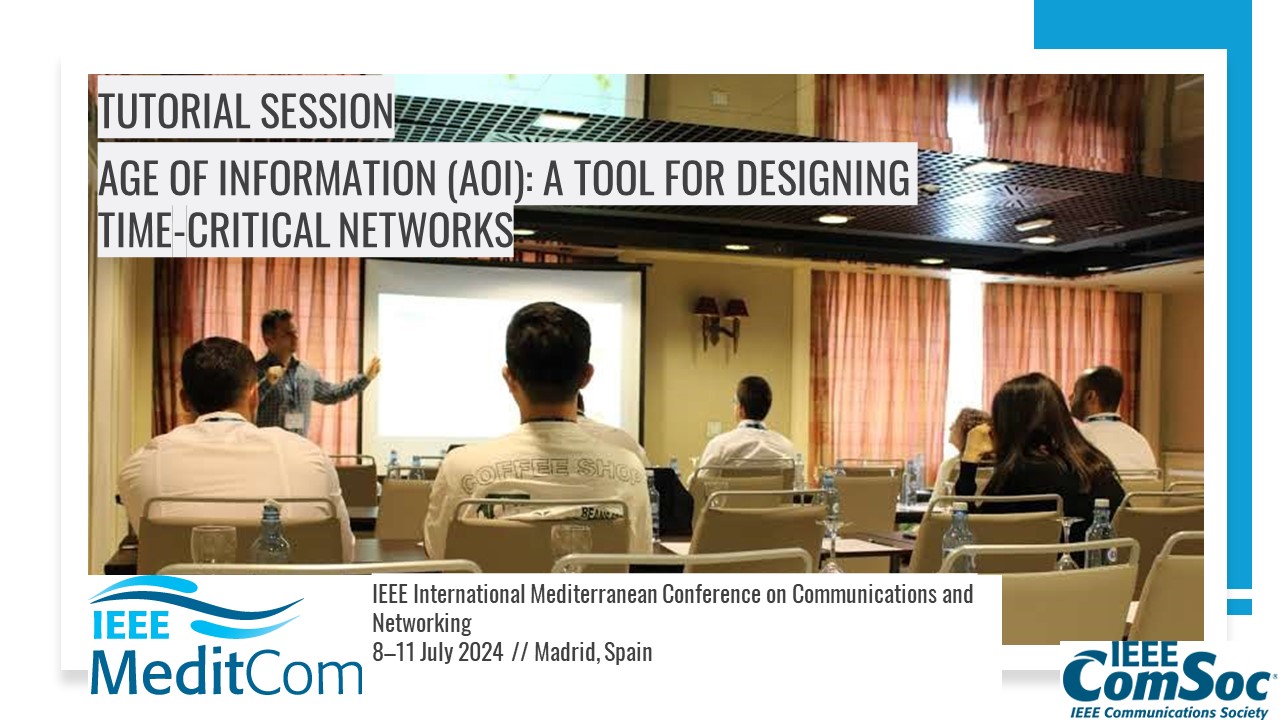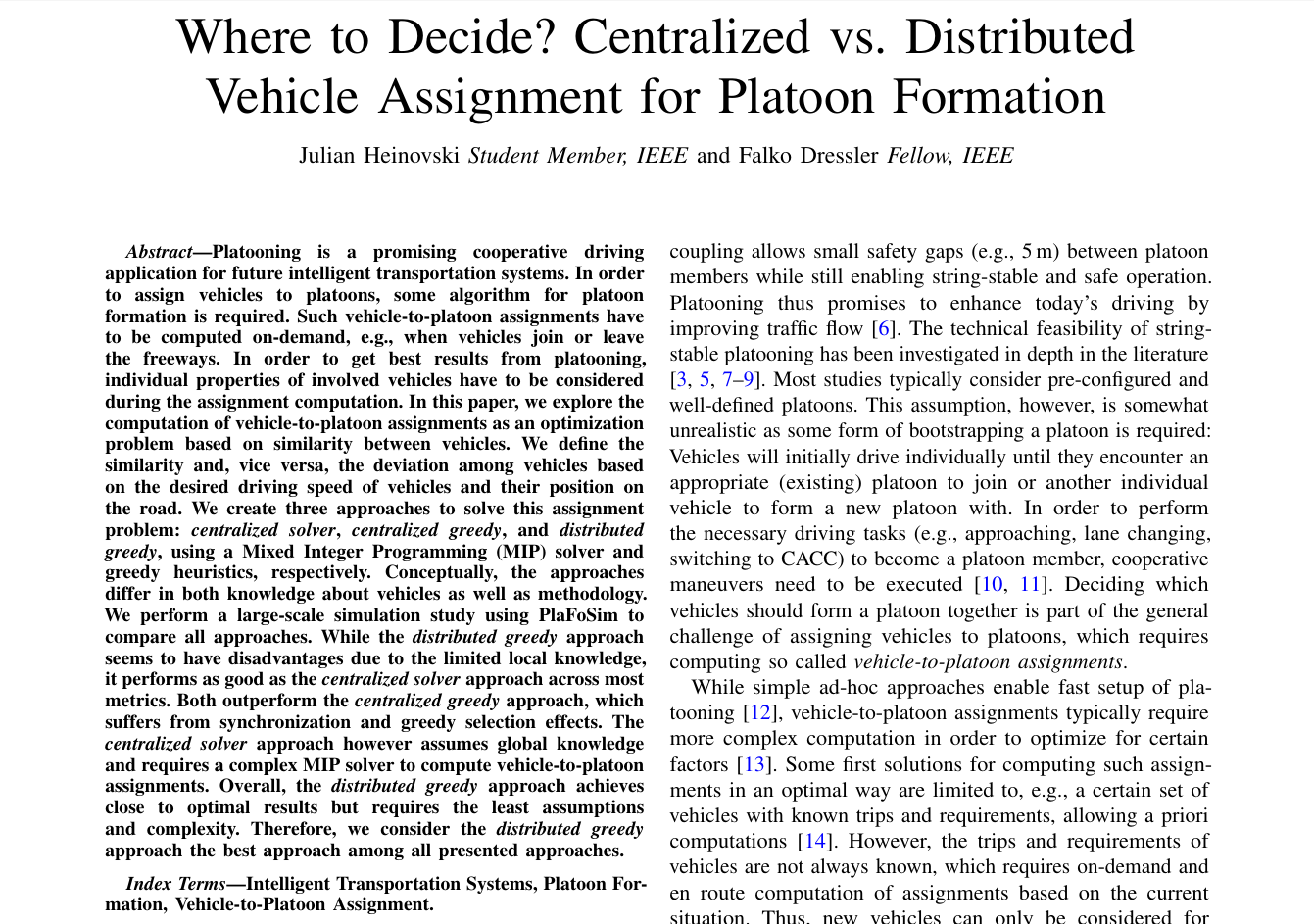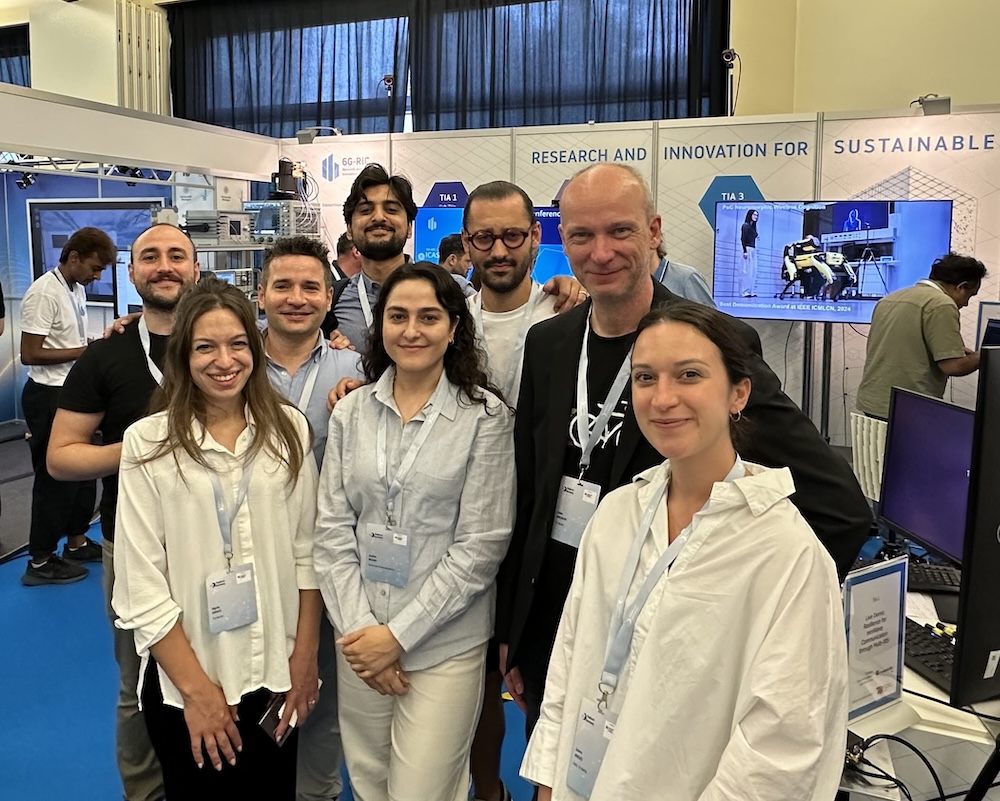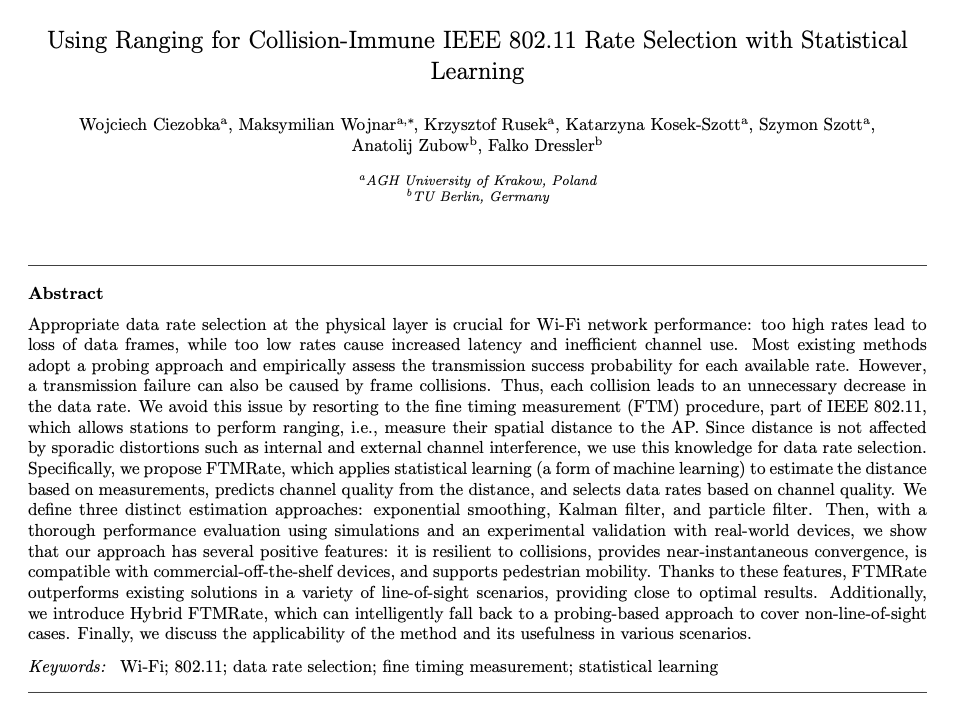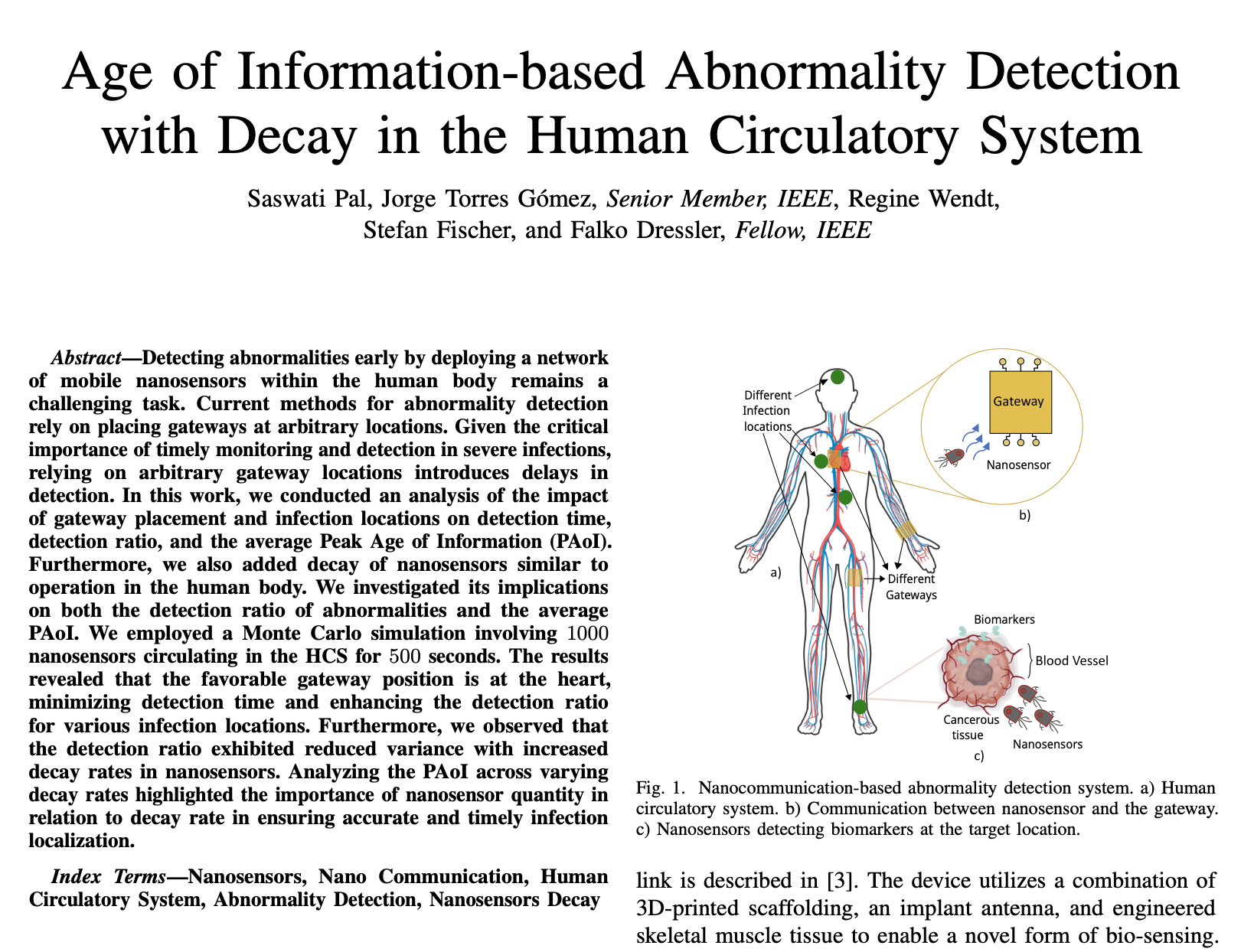Literature Database Entry
sahin2023resource
Taylan Şahin, "Resource Allocation for Vehicle-to-Vehicle Communications under Intermittent Cellular Coverage," PhD Thesis, School of Electrical Engineering and Computer Science (EECS), TU Berlin (TUB), May 2023. (Advisor: Adam Wolisz; Referees: Adam Wolisz, Falko Dressler, Klaus Moessner and Mate Boban)
Abstract
Vehicle-to-vehicle (V2V) communication is a key technology to enable safer, more efficient, and more comfortable road traffic. The stringent reliability and latency requirements of V2V messages necessitate efficient radio resource management given the scarce spectrum and the dynamic vehicular environment. Under cellular network coverage, the resource allocation can be centrally coordinated by a base station (BS), which can efficiently ensure collision-free transmissions. When out of coverage, vehicles resort to distributed mechanisms, which yet suffer from degraded communication quality due to the vehicles’ limited local view. In this thesis, we propose a novel approach for V2V communications in expected, delimited out-of-coverage areas (DOCAs), whereby a centralized scheduler pre-assigns resources to the vehicles via the BSs surrounding the area, before vehicles enter it. We first explore the feasibility of this approach by exploiting the road and data traffic information available in coverage to reserve and provision the resources. While the required number of resources does not grow prohibitively with increased reliability targets, the rate of successful V2V transmissions gets highly impacted by various factors such as vehicle mobility, thus necessitating efficient means to cope with uncertainties in DOCAs. As a predictive method for resource allocation, we propose a vehicular reinforcement learning scheduler, VRLS, which is applicable to DOCAs that vary in vehicle density, mobility, wireless channel characteristics, and resource configurations. VRLS can significantly increase resource utilization efficiency by requiring fewer resources than state-of-the-art distributed scheduling solutions to support the same reliability targets. Nevertheless, considering that the performance of learning-based solutions may degrade upon parameter distributions much beyond their training environment, we propose a hybrid scheme that combines the centralized RL-based and the distributed sensing-based scheduling approaches. We show the performance benefits of such a solution under heavily congested road traffic due to an accident, as compared to either of the centralized or the distributed solutions. Finally, we shift our focus to those areas under network coverage where vehicles suffer from rather short and unpredictable coverage interruptions to the BSs. We consider an extension of our RL-based approach for this problem. The proposed solution performs better than the state-of-the-art baseline in the cases of coverage losses, especially under high traffic load and lower frequency of scheduling updates, otherwise delivering similar performance.
Quick access
Contact
Taylan Şahin
BibTeX reference
@phdthesis{sahin2023resource,
author = {{\c{S}}ahin, Taylan},
title = {{Resource Allocation for Vehicle-to-Vehicle Communications under Intermittent Cellular Coverage}},
advisor = {Wolisz, Adam},
institution = {School of Electrical Engineering and Computer Science (EECS)},
location = {Berlin, Germany},
month = {5},
referee = {Wolisz, Adam and Dressler, Falko and Moessner, Klaus and Boban, Mate},
school = {TU Berlin (TUB)},
type = {PhD Thesis},
year = {2023},
}
Copyright notice
Links to final or draft versions of papers are presented here to ensure timely dissemination of scholarly and technical work. Copyright and all rights therein are retained by authors or by other copyright holders. All persons copying this information are expected to adhere to the terms and constraints invoked by each author's copyright. In most cases, these works may not be reposted or distributed for commercial purposes without the explicit permission of the copyright holder.
The following applies to all papers listed above that have IEEE copyrights: Personal use of this material is permitted. However, permission to reprint/republish this material for advertising or promotional purposes or for creating new collective works for resale or redistribution to servers or lists, or to reuse any copyrighted component of this work in other works must be obtained from the IEEE.
The following applies to all papers listed above that are in submission to IEEE conference/workshop proceedings or journals: This work has been submitted to the IEEE for possible publication. Copyright may be transferred without notice, after which this version may no longer be accessible.
The following applies to all papers listed above that have ACM copyrights: ACM COPYRIGHT NOTICE. Permission to make digital or hard copies of part or all of this work for personal or classroom use is granted without fee provided that copies are not made or distributed for profit or commercial advantage and that copies bear this notice and the full citation on the first page. Copyrights for components of this work owned by others than ACM must be honored. Abstracting with credit is permitted. To copy otherwise, to republish, to post on servers, or to redistribute to lists, requires prior specific permission and/or a fee. Request permissions from Publications Dept., ACM, Inc., fax +1 (212) 869-0481, or permissions@acm.org.
The following applies to all SpringerLink papers listed above that have Springer Science+Business Media copyrights: The original publication is available at www.springerlink.com.
This page was automatically generated using BibDB and bib2web.

